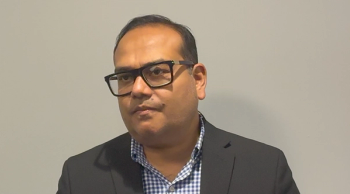
Recurrence assay contributes to clearer picture of prognosis
Data presented by the ATAC Trialists’ Group extends the value of the Oncotype DX Recurrence Score in assessing risk of distant recurrence in breast cancer patients receiving an aromatase inhibitor.
SAN ANTONIO-Data presented by the ATAC Trialists' Group extends the value of the Oncotype DX Recurrence Score in assessing risk of distant recurrence in breast cancer patients receiving an aromatase inhibitor.
The RS has been validated in estrogen receptor-positive, node-negative patients receiving adjuvant tamoxifen, but this is the first time RS has been evaluated in patients on AIs. The results of the retrospective analysis of tumor samples from the ATAC trial showed that RS is an independent predictor of risk for distant recurrence in patients treated with either tamoxifen or anastrozole, reported Mitch Dowsett, MD, PhD, of Royal Marsden Hospital in London.
"This is the largest study of Oncotype DX in any population to date. Our multivariate analysis confirms that along with other standard measures, such as tumor size, the RS contributes independently to providing a more complete picture of prognosis," Dr. Dowsett said. "The established relationship between the RS and distant recurrence can now be applied to anastrozole."
Investigators also examined the relationship of the RS and the risk estimate determined by
"But when we added them together, we got a highly significant increase in information," he added, suggesting that the two tools be used together to optimize risk prediction.
"Physicians can take this information into account when making chemotherapy treatment decisions for both node-negative and node-positive early-stage breast cancer patients planned for either anastrozole or tamoxifen treatment," Dr. Dowsett said.
To estimate the nine-year distant recurrence risk, ATAC investigators evaluated tumor blocks from trial patients receiving monotherapy with tamoxifen or anastrozole, yielding 1,231 hormone receptor-positive samples for analysis. The Cox proportional hazards model was used to test the significance of adding RS to a clinical predictive model (age, tumor size, grade, treatment) and to Adjuvant!Online (SABCS abstract 53).
In the multivariate analysis, tumor size, grade, and RS were separate and statistically significant predictors of time to distant recurrence in node-negative and node-positive patients, Dr. Dowsett reported.
Investigators estimated time to distant recurrence as the primary endpoint. Nine-year rates for distant recurrence in node-negative patients were 4% for RS <18, 12% for RS 18 to 30 and 25% for RS ≥30. For node-positive patients, these rates were 17%, 28% and 49%, respectively. For any RS, the rate of distant recurrence increased with the number of positive nodes.
Comparing high RS score with low RS score yielded a hazard ratio of 2.7, while comparing the intermediate RS with low RS yielded a hazard ratio of 1.8.
The greater efficacy of anastrozole observed in the parent ATAC trial and the similar hazard ratio for RS in both treatment arms suggests a lower risk of distant recurrence for any RS in patients treated with the aromatase inhibitor, Dr. Dowsett added.
Newsletter
Stay up to date on recent advances in the multidisciplinary approach to cancer.



















































































